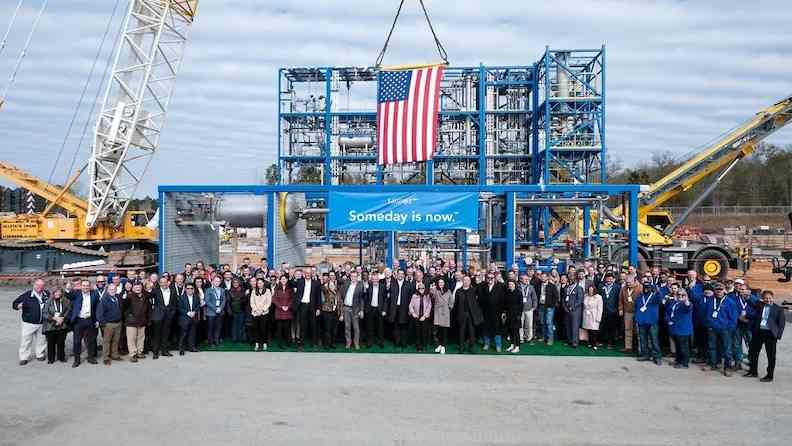LanzaJet unveils world’s first ethanol-to-SAF production plant

American sustainable fuels conglomerate LanzaJet has announced that it has opened LanzaJet Freedom Pines Fuels which it claims to be the world’s first ethanol to sustainable aviation fuel (SAF) production facility.
LanzaJet said that this ethanol-based technology is the world’s first viable next-generation SAF technology capable of scaling production to the levels needed to decarbonize aviation through widely available and sustainable feedstock, emerging commercial waste-based feedstock solutions, and promising economic conditions.
Located in Georgia, LanzaJet Freedom Pines Fuels represents one of the most promising SAF technologies in nearly a decade to reach commercial readiness. It will produce 10 million gallons of SAF and renewable diesel per year from low carbon, sustainable, and certified ethanol which meets U.S. and global standards.
The LanzaJet technology enables current and future supply volume to support a scaled SAF industry as well as the White House’s SAF Grand Challenge, which calls for a supply of at least 3 billion gallons of SAF annually by 2030 to tangibly reduce aviation emissions. With its proprietary ethanol to SAF technology, LanzaJet Freedom Pines Fuels serves as a blueprint for utilizing first-of-its-kind innovation to scale SAF production and combat the worsening climate crisis.
LanzaJet CEO Jimmy Samartzis said, “As we start-up the plant, we will continue to refine our technology, while launching our efforts to advance new sustainable fuels projects globally. Between feedstock versatility, efficiency, and economics that enable scale in the US and globally, we stand ready to meet aviation’s decarbonization goals established at the United Nations and country ambitions, such as the U.S. SAF Grand Challenge.”
The SAF produced by LanzaJet in Georgia will be used immediately as drop-in fuel for existing aircraft in an aviation industry, which contributes two to three percent of all global greenhouse gas emissions from humans. The technology used at the new plant will reduce greenhouse gas emissions by more than 70 percent and produced from a variety of sustainable feedstocks, such as agricultural waste, municipal solid waste, energy crops, carbon captured from industrial processes, and more.




